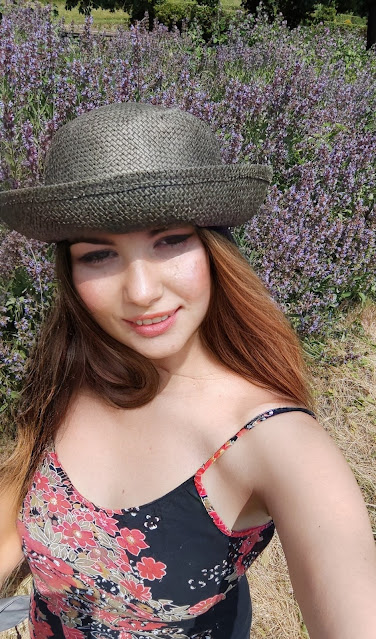Wendy Cabrera Rubio at Peana
Artist: Wendy Cabrera Rubio
Venue: Peana, Monterrey
Exhibition Title: Institute of Pacific Relations
Date: January 29 – April 1, 2021
Full gallery of images, press release and link available after the jump.
Images:



















Video:
Wendy Cabrera Rubio, 2021, 00:19:23
Images courtesy of Peana, Monterrey
Press Release:
A map is an image that describes a territory. These visual materials point to a space and a set of elements under conditions of observation, systematization, identification, and interpretation of a specific territory. In Institute of Pacific Relations, Wendy Cabrera Rubio explores a model that intertwines geography and painting through the figure of Miguel Covarrubias, taking as a reference a series of mural maps that the cartoonist, painter, and geographer made in 1939, in the context of planning the Pacific House in San Francisco, dedicated to illustrating processes and economic-cultural aspects of this region. Through a set of 6 maps, Covarrubias made a radical turnaround in the characterization of the world, turning the globe towards the Pacific and putting America and Asia at the center of various historical and global processes and connections, at the dawn of an armed conflict.
This exhibition is structured around two core elements that bring into play substantial components for the consolidation of modern Mexico’s cultural project: maps and handicrafts. Cabrera Rubio’s work is characterized by a series of interconnections that traverse the limits between high and low culture, image and object, narration and action, through textile and theatrical work, or by the historical study of mass culture, especially cartoons and animation. In this way, she explores the relationships between aesthetics and ideology present in the mechanisms of production and distribution of images. In this exhibition, the artist produces a cartography-mural through four fundamental figures in the construction of visual culture and museography in the 20th century: Miguel Covarrubias, Nelson Rockefeller, Walt Disney, and Mary Blair.
The project explores, in the first room, the history of exhibitions, with the aim of intermingling material, spatial, and representational conditions by reinterpreting these references. The work thus examines the cultural geography developed by Covarrubias through the Pacific House pavilion and the Golden Gate International Exposition. As Mónica Ramírez explains, the model of cultural geography attempted to unite, through graphic representation, issues shared by geography, anthropology, archaeology, and ecology, which Covarrubias’ method succeeded in implementing through the union between art and scientific study. The initial room presents four cartographies that transfer to synthetic felt fragments of films or short films made in the context of the Second World War, specifically of The Nazis Strike (1943), The Three Caballeros (1944) and Victory Through Air Power (1943). Through this exercise, the artist takes animation images to a change in material and format, in order to generate an unfolding in these images: from map to animation, and from animation to canvas. Cabrera Rubio updates Covarrubias’ strategy by attempting to focus a world cartographic record in America, in this case, through the scenes of animated films that depict industrial (architectural or handcrafted) or warlike aspects. Europe only appears when showing the results of a concrete political and cultural project: fascism.
Through this action, the animations change their condition when transposed into image/ object. The portable map-murals establish a dialogue with the Covarrubias model presented in San Francisco and show that Disney and the artist shared at the same time, although with different ideals, a methodology that mixed art, illustration, and cartography. In Disney’s case, this action was a strategy of the Good Neighbor policy, for which he studied a territory for exploitation and commercialization; as for Covarrubias, the search and investigation of an alternative space and history far from a Europe in crisis, also represented an alternative option for a future. The maps seen in this context turned out to be an effective weapon and propaganda in the face of a clear threat of invasion.
This soft muralism is accompanied by a series of cartoon-like plants inspired by the designs of Mary Blair, a Walt Disney illustrator known for generating the artistic concept of films such as Alice in Wonderland (1951) and Peter Pan (1953). Previously, she participated in Saludos amigos (1942) and The Three Caballeros (1944), projects in which Blair operated as a sort of agent during the war in several Latin American countries, analyzing cultural and natural elements of the hemisphere. Blair’s designs are characteristic for giving a fantastic, psychotropic, exotic, and erotic sense to her scenes, which is not far from the look that “el chamaco”1 had on “otherness”.
In a second room, the intersections between cartography and craftsmanship are explored. Various cultural maps by Miguel Covarrubias analyzed characteristic productions of the regions through their artistic manufactures. This moment of the exhibition proposes another deployment of layers: from handicraft to animation, and from cinema to handicraft object. A pig’s mask, a toy horse, a little devil, and two zarapes build, through a dialogue and an animated montage, a museographic alternative dedicated to handcraft production. By analyzing both the collection Nelson Rockefeller formed after his visits to the continent and The three caballeros –specifically, the scenes dedicated to the tour of Mexico– the artist generated a series of designs that artisans from Puebla, Tultepec and Oaxaca transformed into a series of objects. This approach proposed by Cabrera Rubio renews, in terms of equivalence and conjunction, a triad that unites art-craft-design in an animated scenery.
1. “El chamaco” was the nickname given to Miguel Covarrubias
Natalia De La Rosa
Link: Wendy Cabrera Rubio at Peana
from Contemporary Art Daily https://bit.ly/3m8sBCV





Комментарии
Отправить комментарий